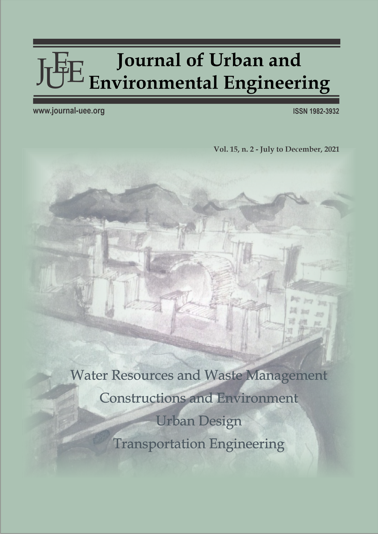RAINFALL INPUT FROM WRF-ARW ATMOSPHERIC MODEL COUPLED WITH MOHID LAND HYDROLOGICAL MODEL FOR FLOW SIMULATION IN THE PARAÍBA DO SUL RIVER - BRAZIL
Abstract
The present work aimed at building the hydrological model for the Paraíba do Sul River watershed, using the MOHID Land model, in order to study channel flows considering six different precipitation inputs. First, two scenarios were created with temporal variation of rain from the precipitation measured by 17 automatic stations of the Brazilian National Institute of Meteorology (INMET) located in the watershed, and interpolated with the FillMatrix tool, by the Inverse Distance Weighting (TIN) and Triangulated Irregular Networks (IDW) methods. The other four scenarios were created from four experiments simulated in the atmospheric model WRF-ARW, corresponding to the spatial and temporal variation of precipitation. The hydrological model considered the Manning coefficients, Curve Numbers and cross sections extracted from the database of the Brazilian National Water Agency (ANA) together with the operation curve of the reservoirs extracted from the situation room on the Geographical and Geoenvironmental Information System of the Paraíba do Sul River Watershed (SIGA-CEIVAP) website. The analysis period corresponds to the month of January 2019 (01/01/2019 00 UTC and 01/02/2019 00 UTC), with hourly evaluation. The measured channel flow data used were extracted from the ANA fluviometric station, in the Campos dos Goytacazes city, State of Rio de Janeiro, and they were used for the statistical indices calculation, BIAS, MAE, MAPE, RMSE and Pearson's Correlation (R), in order to evaluate the model. The results showed that once the physical parameterization of better performance in the atmospheric model (WRF – Weather Research and Forecasting) was established, the use of the modeled rain yields a superior performance in comparison to the interpolated (observed) rain for implementation in the hydrological model (MOHID – MODagem HIDrodinâmica), with the aim to study the channel flows.Downloads
Download data is not yet available.
Downloads
Published
2021-12-15
Issue
Section
Articles




